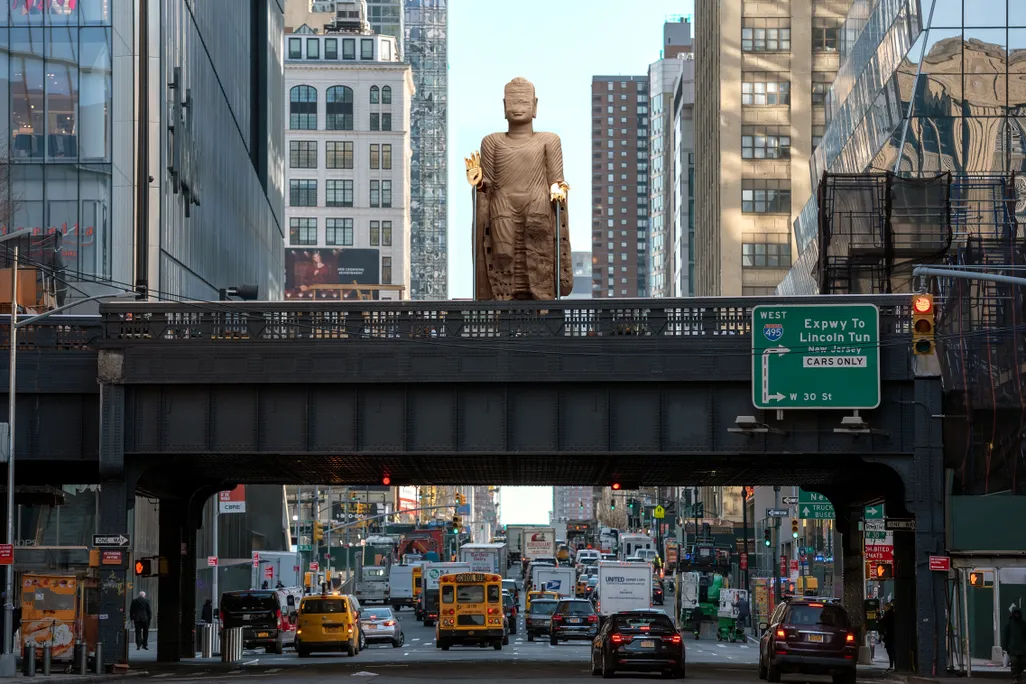Just about anyone who has ever attempted to learn Chinese can agree on one thing: it’s really, really hard. There are thousands of little pictures you have to memorize just to read a menu, the tones are endlessly confusing, and there are so many idioms that even simple news reports don’t make sense unless you know that specific story about that one guy who loved painting bamboo that one time (no, seriously).
Even if you’ve never heard or spoken a word of Chinese in your life, you’ve probably used its notorious difficulty as an analogy for something confusing, i.e. “it’s like you’re speaking Chinese right now.”
So, everyone can agree that Chinese is hard. What “Chinese” actually is, however, is a different story — and a fascinating story at that. To that end, A Billion Voices: China’s Search for a Common Language does in a hundred pages what entire libraries of dense academic writing often can’t: it tells the story of what putonghua (or as it is commonly yet somewhat incorrectly referred to, Mandarin) is and how it came to be. More importantly, it tells that complex story in a straightforward and fun-to-read manner.

For you fellow China geeks out there, Professor David Moser needs no introduction. He runs the CET Beijing program, is a frequent guest on the Sinica Podcast, and was appearing on Chinese television before there was an internet to censor. If you do need an introduction, however, I’d recommend checking out his 1992 article Why Chinese is so Damn Hard as both a primer to the book and a fun read on its own.
I sat down with Professor Moser recently in the hopes of learning about the most important lessons of A Billion Voices direct from the source — and to find out what he personally hopes people will get from his book. Between that conversation and my own read-throughs, I’ve tried to boil it all down to three of the most valuable lessons A Billion Voices has to offer.
1. Most people don’t realize that Putonghua Chinese is a modern invention.
Spend some time living in China — or just visit — and you’ll come home to question after question about what exactly “Chinese” is. Common-knowledge-wise, I’d say we’re at the point where most people realize that “Mandarin” is one thing and “Cantonese” is some other thing, and that they once heard that some village somewhere has some totally different dialect, but that’s about it.
What most people THINK they know about Chinese, however, is that it’s old. Like, really old. And while it’s true that the writing system in one form or another is quite ancient, China didn’t have a truly shared national language even as recently as a century ago. The attempt to solve that problem is literally the title of the book, so I’ll stop here before spoiling anything. Let’s just say it isn’t exactly the story of a bunch of beard-stroking sages contemplating the most prudent linguistic path forward.
2. Most people don’t realize what a burden Chinese characters are — or that Chinese scholars have long advocated getting rid of them.
The idea that needing to memorize a few thousand pictograms in order to be literate is a big ask, to say the least. What Professor Moser is so good at explaining in layman’s terms, however, is how the character system isn’t just difficult, it’s a massive burden with real-world consequences.
Being a student in the world of Chinese characters doesn’t just mean you need to put in more hours (oh boy, do you ever). It also means that even the brightest and hardest-working kids can barely write a simple note by the time their alphabet-using counterparts can essentially express whatever they’re thinking in writing.

To put it another way: yoo can prabably reed this, rite? This ees an axeptable way to kammunicate, izn’t it? But if a 10 year old Chinese student can’t remember how to write “鼠” or “酪” — could you? — they might find themselves in the very real position of being in 4th grade and unable to write “老鼠喜欢奶酪,” or “the mouse likes cheese.”
People naturally assume that anything so difficult must be somehow inherently worth it, but the book contends that what kids have to go through in order to learn characters — countless hours of rote learning and repetitive exercises — simply isn’t conducive to learning or worth the opportunity cost.
This isn’t a criticism unique to foreign observers, either. Everyone from highbrow Chinese scholars to Mao Zedong himself has pointed out over and over what a pain characters are, and how much better off the average person would be without being saddled with their mastery. And for those of you thinking “wait, but didn’t they simplify the characters?”, the book does an excellent job of explaining why that was a bit like slapping a Band-Aid on a bleeding stump.
3. Most people don’t get how fractured and linguistically diverse China is.
We tend to look at China as a big homogenous monolith. Yes, we get that there’s political tension and strife and whatnot, but culturally, both Chinese and Western media tend to present it as one ancient, unified civilization. The popular image of China for everyone from politicians to comedians is of a billion people who all essentially look and sound the same. And that’s not just our racist assumption — it’s what the powers-that-be in China want us to think. But even if you realize that can’t possibly be the case, you probably don’t realize to what extent it isn’t.
Related:
![]() Overheard at the Forbidden City…Article Nov 09, 2017
Overheard at the Forbidden City…Article Nov 09, 2017
In reality, China has hundreds of different dialects and languages. That doesn’t mean slight variations on what’s basically the same language; it means that without a common language (again, a modern invention), a person from Shanghai and a person from Beijing would barely understand each other.
Get further away from the east coast and the differences only get more extreme; in Tibet alone, there are over 30 dialects/languages. And I use “dialect/language” to illustrate the point that there isn’t a clearly defined academic distinction between those two terms. A language, as the book points out, is just a “dialect with a navy.” And the politics of what gets to be considered “Chinese” and what doesn’t is not only interesting, but directly impacts real communities all over China today.
So who is this book for?
If you know nothing about Chinese, this is a fun and pain-free way to dip your toes in the water. If you know a bit and want to better understand what it is you’re attempting to tackle, this has you covered.
But if if you’re already a China geek, you already know just about everything in this book. If you’re anything like me, however, you’re probably eternally frustrated by an inability to boil down years of failure into a brief explanation for your curious — but not that curious — friends and family. This book gives you the toolset to do you.
Or better yet, you can simply leave it out on the kitchen table and answer every Chinese-related question with “read that.” Worked for me.
Cover image: A Billion Voices: China’s Search for a Common Language (Penguin Specials)

















